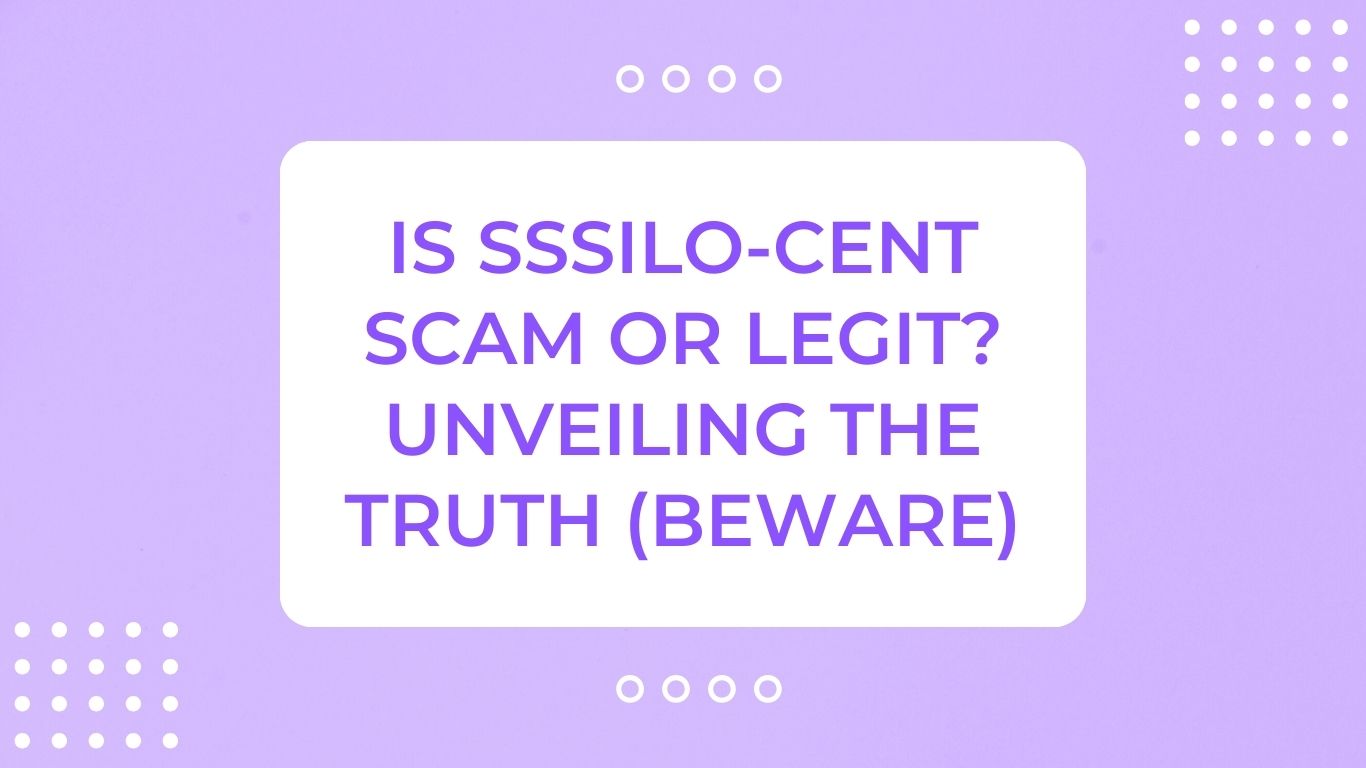What is the SSSILO-CENT Scam and How Does it Work?
The SSSILO-CENT scam is a sophisticated phishing scam that has been targeting users in the Philippines through spam text messages.
Recipients receive messages claiming a suspicious online payment was made through their BDO bank account for an amount around ₱12,500-₱13,500.
The message urges the recipient to cancel the transaction by visiting a malicious link. Upon closer inspection, several red flags emerge:
✔️ The message is sent from an unknown sender with no contact number provided. Legitimate banks always identify themselves clearly.
✔️ Many recipients confirm they don’t even have a BDO account associated with their number.
✔️ Searching for “SSSILO-CENT” online yields no legitimate information, suggesting it’s a made-up name used solely for this scam.
✔️ The provided link aims to steal users’ banking credentials and personal details rather than resolve any transaction as advertised.
The goal is to instill a sense of panic and urgency to trick users into clicking the link and exposing themselves to fraud. By preying on fears of account takeovers, these scammers efficiently spread their deceitful ploy.
How Can You Identify and Avoid the SSSILO-CENT Scam?
Now that we understand how the scam operates, here are some best practices to identify and protect yourself:
Be Skeptical of Unfamiliar Messages – Legitimate organizations will clearly identify themselves upfront. If anything seems vague, fishy or makes no sense, distrust it.
Verify Before Acting – Never interact with links or unknown senders right away. Go directly to your bank’s official website or app instead of following external prompts to verify claims.
Check for Context Clues – Scams often contain tells like non-existent transaction reference numbers, grammatical errors or requests for sensitive info. Read carefully between the lines.
Beware Unlisted Senders – Real entities always use registered contact details, not anonymous text messaging. If no phone number is visible, treat the message as spam.
Research Online First – Searching terms like “SSSILO-CENT scam” would have revealed this is a known phishing scheme. Doing research is a basic step to avoid falling victim.
Analyzing the Technical Infrastructure Behind the SSSILO-CENT Scam
To unpack the scam’s anatomy in greater depth, let’s analyze its technical infrastructure and methods of propagation:
SMS Spoofing – Cybercriminals hijack legitimate phone numbers through techniques like SMS spoofing to disguise the source and avoid detection. This gives a façade of authenticity to otherwise suspicious texts.
Bulk Messaging – With the ability to spoof many numbers simultaneously, scammers employ sophisticated tools and botnets to automate spreading fraudulent messages at scale quickly through text blasts nationwide.
Disposable Webpages – Typically, the malicious links embedded in SMS scams redirect to temporary sites hosted on anonymizing services or hacked servers with short lifespans to evade takedowns.
Payload Delivery – Once a target interacts with the page, it immediately installs browser-based malware payloads designed to steal login credentials entered on banking or other sensitive online accounts.
Credential Theft – Stolen credentials get resold on dark web forums or immediately used for financial fraud against the victim’s accounts in real-time before they notice suspicious activity.
Cash-Out Methods – Fraudsters employ various cash-out techniques including money muling, cryptocurrency laundering and online merchant gifting redemptions to layer and withdraw ill-gotten funds anonymously.
Sprawling Ecosystem – Behind the scenes, interconnected cybercrime groups specialize in different scam infrastructure elements like phishing site hosting, number spoofing services, malware coding and money laundering networks.
How Can Authorities and Banks Battle SMS Phishing Scams?
While individual vigilance helps, broader solutions are needed since these scams spread deceptively fast through technical means. Some proactive measures authorities and banks could take include:
Monitor for Scam Terms – Banks and telcos should work with agencies to spot emerging scam terms like “SSSILO-CENT” and preemptively filter associated links and messages.
Trace Senders and Shut Down Infrastructure – With subpoena powers, authorities can compel telecom and cloud services to disclose scammer identities and servers for legal action.
Educate the Public – A consistent public awareness campaign through various mediums helps inform even non-internet users on scams to watch out for.
Embrace Multi-Factor Authentication – Banks promoting extra login security steps like one-time pins significantly raises the bar for would-be scammers.
Establish Reporting Portals – Designated agencies need platforms for easy, accessible reporting of suspected scam attempts to strengthen monitoring and response.
Forge International Cooperation – Criminals often operate across borders, so authorities worldwide must unite against the shared problem through intelligence sharing.
With proactive security measures and close public-private partnerships, authorities and responsible organizations can curb the spread and success rate of SMS phishing scams like SSSILO-CENT that actively endanger users.
In Summary
In this detailed analysis, we explored the deceptive tactics behind the “SSSILO-CENT scam” spreading through text messages in the Philippines.
By understanding how it works, identifying its tell-tale signs and taking pragmatic precautions, readers now have the power to see through this scam’s facade and make wise decisions protecting their financial well-being and digital security.
With sustained technical and legal solutions paired with empowering community education programs, societies can progressively gain ground to curb widespread cybercrime and its harms and build a digitally secure future for all.
Also Read: Juanhand Loan Philippines: Legit or Scam?
